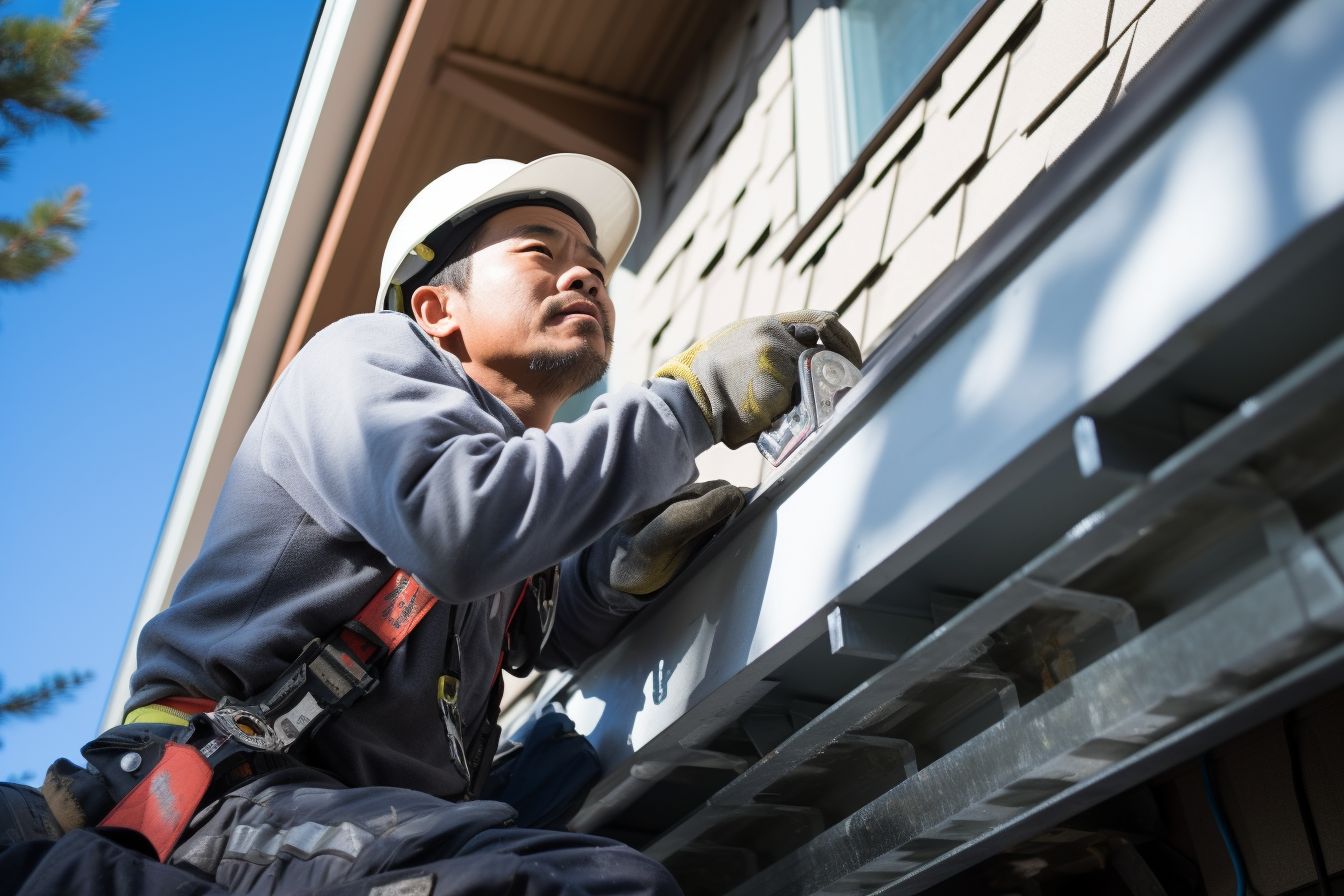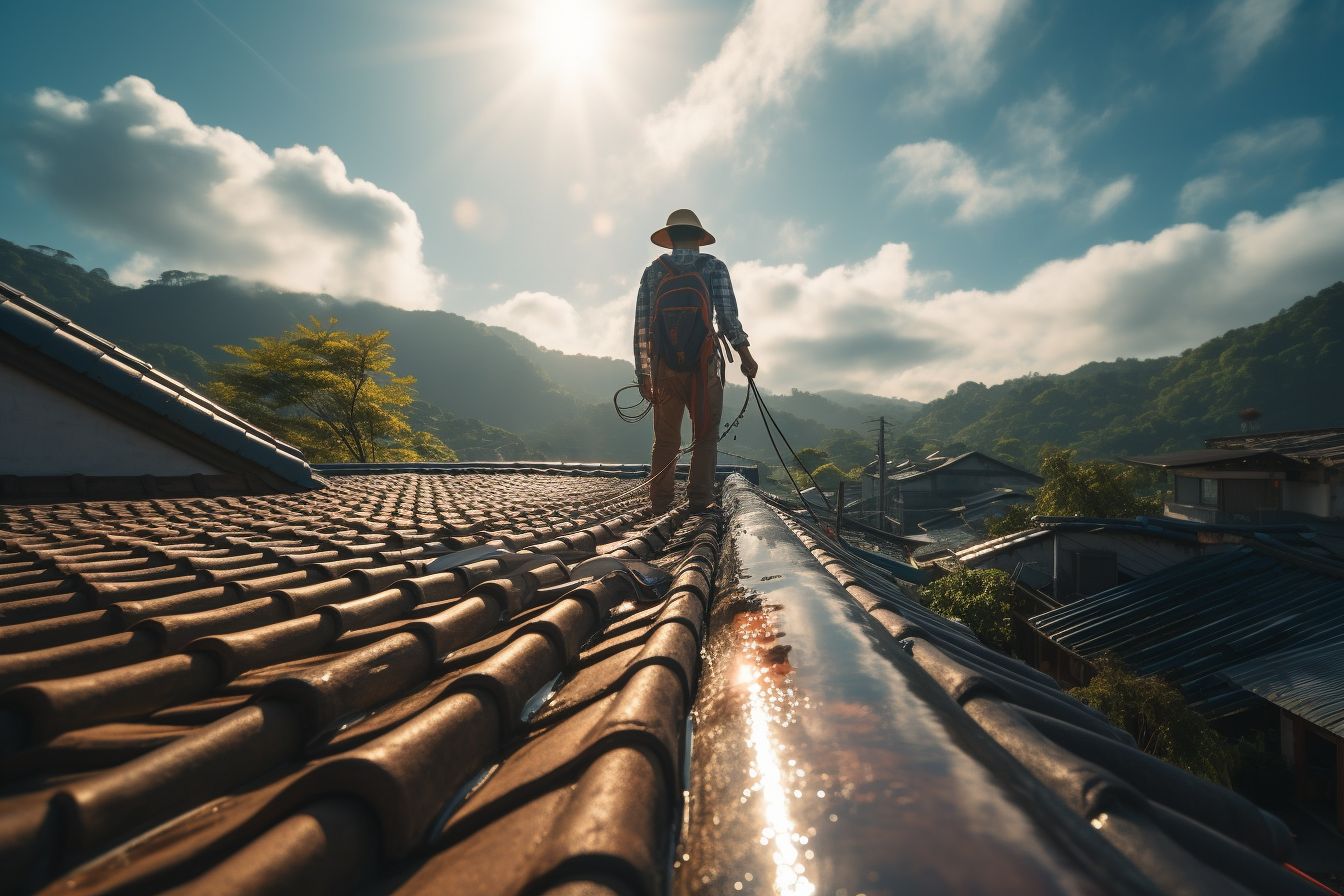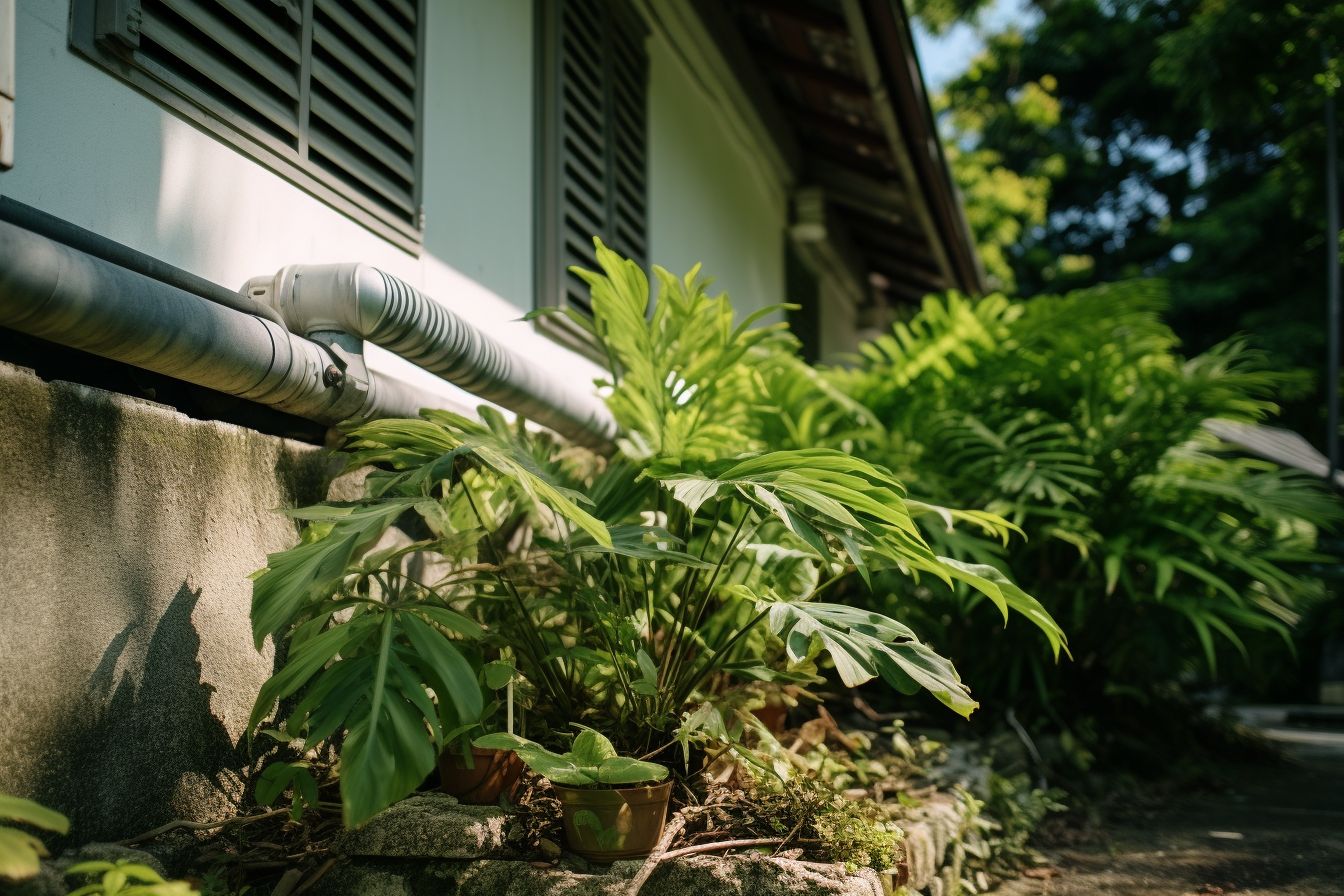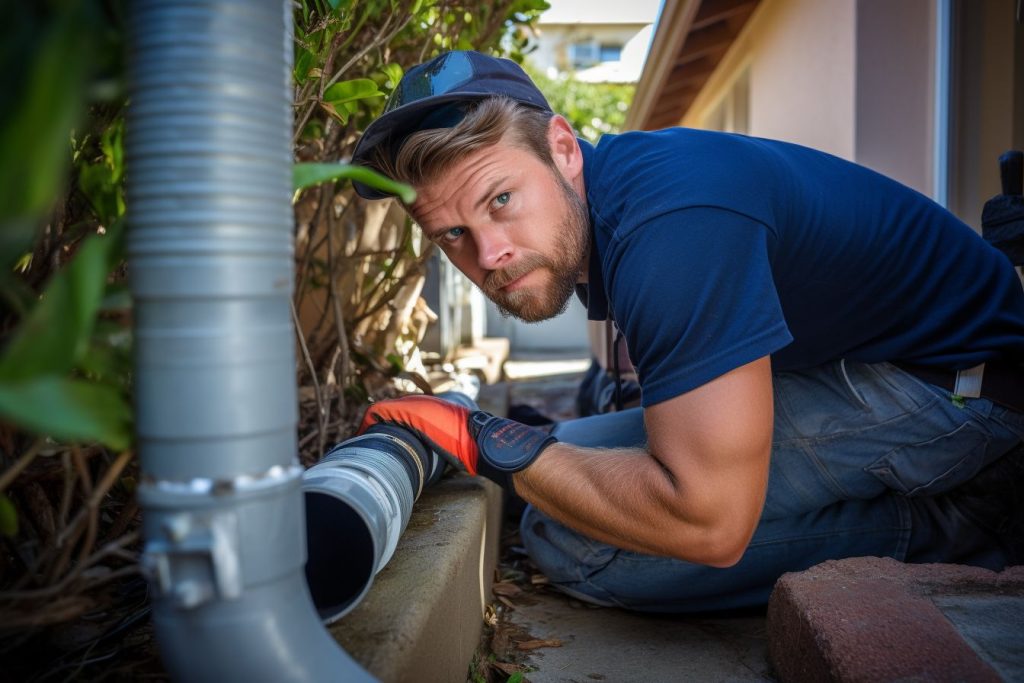Are your gutters overflowing every time it rains? A crucial yet often overlooked component of any rain gutter setup is a downspout, a key player in diverting water away from our homes.
In this article, we’ll walk you through the ins and outs of these trusty drainage systems – from types to installation considerations and maintenance tips. Ready to save your home from potential water damage? Let’s get started!
Key Takeaways
- There are three common types of downspouts: K-style, round, and rectangular.
- Proper installation and placement of downspouts are crucial in preventing water damage to your home.
- Regular maintenance, such as gutter cleaning and checking for blockages, is essential for a functional downspout system.
- Understanding and caring for your home’s downspouts can save money by preventing water damage.
Types of Downspouts
Downspouts come in various shapes and styles to suit the design needs of homeowners. Here are the common types:
- K-Style Downspouts: This type features a design unique for its non-circular shape. It blends well with modern architecture and adds an aesthetic appeal to the home.
- Round Downspouts: As their name suggests, they have a round shape. They provide efficient water drainage from rain gutters and are ideal for homes with curved or classic architecture.
- Rectangular Downspouts: True to their name, these downspouts have rectangular lines that fit seamlessly with both traditional and contemporary homes.
Installation and Placement Considerations

Proper installation and placement of downspouts play critical roles in preserving the exterior of your home. They need a strategic position to work correctly, preventing potential water damage that can lead to costly repairs.
A key guideline suggests installing at least one downspout for every 40 linear feet of gutter fitted near your roofline, ensuring efficient water drainage from heavy rains or melting snow.
The Oklahoma gutter company also emphasises the importance of considering how far you want water to flow from your home’s foundation. Therefore, let these considerations guide you during the installation process as they form an integral part of gutters’ efficacy, securing the structural integrity and aesthetic appeal of your beloved home.
Maintenance and Care

Proper care and routine maintenance form the backbone of a functional and reliable gutter downspout system. It’s vital to incorporate the following steps into your home maintenance plan:
- Regularly conduct gutter cleaning to prevent leaves, debris and clogs from hampering water flow.
- Keep an eye on water pooling near the drop outlet, which commonly signifies a blocked downspout.
- Act swiftly and clean out any blockages as soon as they’re spotted, ensuring proper downspout function.
- Consider extending your downspouts for improved water drainage, directing it away from the house structure.
- Always ensure your downspouts are positioned correctly, promoting optimal water flow and preventing potential home damage.
Conclusion

Downspouts serve a definitive role in safeguarding your home from water-related issues. Their purposeful design aids in effectively managing rainwater, steering it clear of the foundation.
These downspouts’ right placement and regular maintenance enable optimal functioning and longevity. Therefore, investing time in understanding and caring for your home’s downspouts pays off substantially by preventing potential water damage.
FAQs
1. How do downspouts help with water drainage?
Downspouts direct rainwater from the roof to the ground, preventing water accumulation and potential damage to your home’s foundation.
2. Can I install downspouts myself?
Installing downspouts can be a DIY project with basic tools and instructions. However, seeking professional assistance for complex installations or if you are unsure about doing it yourself is recommended.
3. What maintenance is required for downspouts?
Regular maintenance involves cleaning out debris, such as leaves and dirt, that may clog the downspout. You should also check for any leaks or damages that need repair.
4. Should I use an extension on my downspout?
Using an extension on your downspout can help redirect water further away from your house’s foundation, which helps prevent soil erosion and basement flooding.
5. How long do typical downspouts last?
The lifespan of a typical aluminium or vinyl downspout is around 20-30 years, while copper ones can last up to 50 years or more with proper maintenance.

